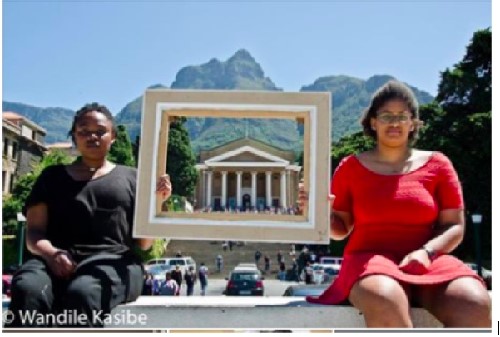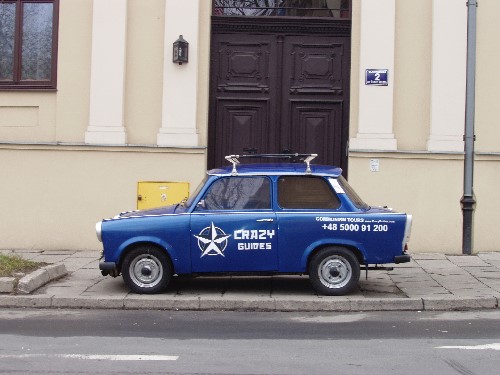‘Reframing’ – as a mode of practising and managing colonial heritage, Britta Timm Knudsen
The colonial heritage practice of reframing is literally a heritage practice that frames colonial heritage as a renewable resource. Reframing entails inserting and staging a legacy into new narratives and creating experiential material environments or curatorial spaces around them to offer public leisure activities that can sensitize larger audiences to colonialism as a difficult past. In this sense, reframing approaches the politicized mode of re-emergence. But reframing runs the risk of simply overlooking the difficulties and severe long-term consequence of colonialism by being eager to reposition the colonial heritage in question. And reframing can likewise too willingly comply with voyeuristic desires of publics and thereby turn into dark heritage sites for thrill-seeking visitors. In that case, the colonial past tends to become de-politicized, packaged and consumed as just another ‘experience’. A reframed colonial past can then, while boosting local, regional or even national economies, prevent awareness of, public debates on and actions relating to the past in question.
The word reframing contains three elements that I would like to distinguish from each other here. The prefix ‘re’, and the words frame and framing. To begin with frame, we can say that frames are presupposed dominant trivial meanings that citizens in prescribed sociocultural contexts have at hand to identify and make sense of what is happening in their world (Goffman 1974). In communication theory and media studies, framing is used to describe the power of a communicating text when it becomes informative and performative (Entman 1993) (Ill. 1).

With framing, an overtly discursive as well as an often intentional and strategic purpose to a situation of communication is added in the way framings support, negotiate or run counter to dominant frames. Such framings are more or less explicit in the ways they state and address their own framings. An interesting case of a heritage practice that has shifted from being trivial and just supporting dominant meanings to become informative and here regarded as a biased and race-insensitive utterance in public space – and therefore subject to contestation – is the phenomenon of Zwarte Piet, the black companion of Sinterklaas [Santa Claus] in the annual celebration of the Sinterklaasfeest [Christmas] in the Netherlands. The politicization of Sinterklaasfeest and its reading as an overt (neo)colonial cultural practice is a distinct expression of the fact that trivial frames – and not only particular framings – are changing. Trivial frames are often targeted in decolonial criticism and heritage practices.
To reframe colonial heritage as a renewable resource, then, entails inserting its legacy into new narratives and alternative material settings that can help to create a ‘new’ heritage. Reframing can take various forms and build in various degrees on the specific colonial historical past in question.
As all kinds of past are renewable resources, tourism and the heritage industry enter our conversation on colonial heritage as strong parameters of local, regional and national growth and development. It is very often the case that both framings and reframings of colonial relics, landscapes or practices are encouraged and fuelled by new mobility patterns. The concept of framing is used by Dean MacCannell in tourism studies as part of what he calls sight sacralization. Looking at how to produce a tourist attraction, he defines it as a relationship or a situation of communication between a tourist, a sight and a marker (signs, guidebooks, travelogues, TripAdvisor etc.). Framings have the function of either protecting or enhancing the sight, and they can be investigated discursively or materially (MacCannell 2013: 44). In order to produce sight sacralization, massive institutional support is one strategy. Another is to search for other agents, artistic or citizen activist groups who, at specific in situ places, with pronounced haunting atmospheres and with the help of strong charismatic materialities, are capable of attracting audiences to a sight. Being a part of the experience economy colonial heritage is re-inscribed as a hybridity between metropole and culture. Both are present in the immigrant and diaspora groups living in and visiting cities and in the historical markers of colonialism and subsequent decolonial practices in the urban fabric.
When a difficult and atrocious past such as colonialism is translated into business, the risk is always present to compartmentalize, domesticate and tame the critical and transformative potential of that heritage, but this need not always be the case. It really depends on the framings and reframings used and what kinds of actors are in play. Cities and regions use, to some extent, their difficult pasts in their branding strategies because tourists reclaim site specificity and depth in their experiences. Continuing our focus on frames, we can say that in the experience economy, business is considered as theatre – and as such Goffman’s and MacCannell’s theatrical metaphor for social interaction as being on stage is continued – in which the imaginary fourth wall between the actors on stage and the audience no longer exists (Pine and Gilmore 1999). An experience of full immersion and even co-creation is now researched and widely reclaimed (Boswijk et al. 2007, 2012). As such, whole cityscapes and large areas can be part of a colonial reframing that stages social interaction in particular ways. It is these ways – the interaction modes, as well as the impact of these modes – that we as colonial heritage scholars in ECHOES need to investigate closely in each case.
An example of a colonial past in a cityscape that is reframed and cherished, for its strong symbolic brand value and iconicity, is the urban district of Shanghai French Concessions which, from 1849 until 1943, was occupied and governed by France, and as such part of the French Colonial Empire in Asia (Ill. 2).

Today, private tour companies offer Walking Tours in the area and they frame the area in the following way:
The French Concession is one of Shanghai’s hippest and most historic neighbourhoods, constructed by French consuls during the 19th and 20th centuries. During this fun and informative walking tour, you’ll be joined by a private guide on a stroll through the leafy, European-built neighbourhood. Discover hidden charms, such as art deco mansions and French-style parks, as you explore the city’s unique mix of old European and classic Shanghainese. ~TripAdvisor, Shanghai Melody Walking Tours
As a tourist offering, French Concessions are hip, historic (singled out as such) and a mix of Europe and China. Giving the district a strong taste of decadence that is echoed in its cultural signification as a tourist site, one could ask what the French Concessions are to contemporary inhabitants of Shanghai: a gentrified area with skyrocketing real estate prices? The site of a difficult colonial past? Does anyone remember or commemorate the fact that the parks during colonial times were forbidden land for the Chinese and dogs (Bickers and Wasserstrom 1995)? Or is the area only supposed to evoke a nostalgic longing for a vague imperial past fulfilling all desires? For Amanda Lagerkvist (Lagerkvist 2013), the reframing of French Concessions is a-critical and nostalgic. Being an economic driver and a major tourist attraction of this mega city’s development as a cultural hub in East Asia, the reframing of colonial traces apparently works by using a no longer disturbing discourse around the past that is re-contextualized as nostalgic hipness. Here, Europe becomes a leisure-scape tainted with nostalgia and re-vitalized through new tourism actors and their practices. But one can also see French Concessions as an entanglement of “old European and classic Shanghainese”, as a way of reclaiming this heritage, and it is up for debate whether this gesture is further silencing an unacknowledged colonial era or is just an expression of this place’s pluriversity and hybrid inscriptions.
Decolonial initiatives in the experience economy
As already mentioned, reframing strategies for any heritage relate to economic factors such as competitiveness between cities and regions and the degree to which colonial heritage can attract audiences and serve as cultural and economic drivers of development. The concept of dark tourism has a lot of unhealthy and unholy connotations in the form of atrocity hungry, thrill-seeking narcissist tourists who only want to satisfy their own exoticizing tourist gaze of consumption. Moving heritage into the experience economy does not necessarily entail corruption and less ambition as to the critical potential of the initiative. The consequences for those who have to be investigated are documented in each case. Below, I will explore a reframing strategy for Nowa Huta, an outskirt “outcast” area in Krakow performed by local young entrepreneurs.
Crazy Guides Communism Tours to Nowa Huta, built as a model Communist city in the mid-1950s by the Soviet Union around the steelworks of Stylowa, are an example of a tourism strategy built upon a form of colonial past. Local young Polish entrepreneurs reframe quite a few things through their tourism design (Ill. 3).

Highlighting an unwanted past and a local area in low esteem as a site worthy of tourism merchandize is a bold move that reframes the whole assemblage (people, buildings, practices) and the inherited past into tourism. In this move, a certain nostalgia for the ‘communist other’ can be detected in Western tourists, but this nostalgia is both met and critically undermined (Knudsen 2010). And first and foremost, the crazy guide team of symbolic workers perform affective labour through their own investment, which provides a very fertile ground for personal and intercultural connectivities.
In conclusion, investigating reframings means looking at frames and framings as material and discursive sight sacralizations and experiential stagings of the colonial heritage in question. Analyzing reframings implies looking at if and how the reframing confirms or transforms trivial frames in specific contexts. It also implies looking at who is staging the colonial heritage anew, what kinds of mobility flows are facilitated, which experiences are afforded and which kinds of connective relationships are encouraged by the reframed sites and events.
References:
Bickers, R.A. and Wasserstrom, J.N. (1995) “Dogs and Chinese Not Admitted” Sign: Legend, History and Contemporary Symbol. The China Quarterly, 142, 444–466.
Boswijk, A., Thijssen, T., Peelen, E. 2007. The experience economy. A new perspective. Amsterdam: Pearson Prentice Hall.
Boswijk, A., Peelen, E., Olthof, S. 2012. Economy of experiences. Amsterdam: Pearson Education.
Entman, R.M. 1993. Framing: Toward Clarification of a Fractured Paradigm. Journal of Communication 43(4), 51–58.
Escobar, A. 2016. Thinking-Feeling with the Earth: Territorial Struggles and the Ontological Dimension of the Epistemologies of the South. AIBR. Revista de Antropología Iberoamericana 11(1), 11–32.
Goffman, Erving. 1974. Frame Analysis: An Essay on the Organization of Experience. New York, NY et al.: Harper & Row.
Knudsen, B.T. 2010. The past as staged-real environment: communism revisited in the Crazy Guides Communism Tours, Krakow, Poland. Journal of Tourism and Cultural Change 8(3), 139–153.
Lagerkvist, A. 2013. Media and Memory in New Shanghai. Western Performances of Futures Past. London: Palgrave Macmillan.
MacCannell, D. 2013, [1976]. The Tourist. A New Theory of the Leisure Class. Berkeley, LA, London: University of California Press.
Pine II, J.B. og Gilmore, J.H. 1999. The experience economy. Work is theatre & every business a stage. Boston, Massachusetts: Harvard Business School Press.
Britta Timm Knudsen is Associate Professor at the School of Communication and Culture, Aarhus University, Denmark.
To cite this text:
Knudsen, Britta Timm (2018), ‘Re-emergence’ – as a Mode of practising and managing colonial heritage. [online] ECHOES: European Colonial Heritage Modalities in Entangled Cities. Available at: http://projectechoes.eu/keywords/ [Accessed XX.XX.XXXX].
